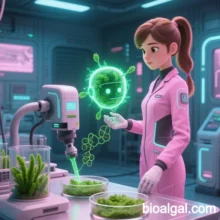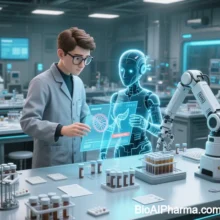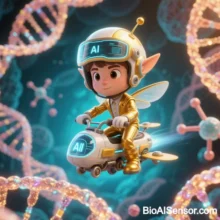
Protein Engineering in Synthetic Biology: Recent Advances and Future Prospects
The convergence of synthetic biology and protein engineering is redefining biotechnology. Recent breakthroughs in protein design, optimization, and application—powered by gene editing, AI, and cross-scale engineering strategies—are driving transformative innovations. Below, we explore these advances across three dimensions: technological breakthroughs, expanding applications, and future frontiers.
I. Technological Breakthroughs: From Rational Design to AI-Driven Innovation
Multi-Scale Host Metabolic Engineering
Synthetic biology integrates gene-pathway-host optimization to enhance protein production:
- Metabolic Flux Reprogramming: Ribosome-engineered strains (e.g., E. coli) with knockout competing pathways (e.g., ackA for acetate synthesis) and ATP overproduction modules achieve 3–5x higher recombinant protein yields.
- Orthogonal Translation Systems: Non-canonical amino acids (e.g., p-nitrophenylalanine) enable site-specific protein modifications, diversifying functionality.
Enzyme Engineering Innovations
- Directed Evolution + Rational Design: Deep learning predicts mutation hotspots in enzyme active sites, enabling high-temperature cellulases (ΔTm +12°C) and hyperactive P450 oxidases (8x higher k<sub>cat</sub>).
- Dynamic Allosteric Control: Light-switchable proteins (e.g., LOV2-fused enzymes) enable spatiotemporal control for on-demand synthesis of drug precursors.
AI-Driven Protein Design
- Structure Prediction & Generation: AlphaFold3 and ESMFold achieve >90% accuracy in single-chain protein structure prediction, creating novel folds (e.g., helix-β-barrel hybrids).
- Sequence-Function Modeling: Transformer-based models (e.g., ProGen2) design high-stability antibodies (ΔTm +15°C) and substrate-specific kinases with 40% higher success rates.
II. Expanding Applications: From Therapeutics to Smart Materials
Precision Medicine
- Targeted Therapeutics: Engineered IL-2 variants (e.g., “selective Treg-boosting mutants”) reduce toxicity by 70% in autoimmune disease models.
- Smart Drug Delivery: pH-responsive elastin-like recombinamers (ELRs) trigger tumor-specific drug release, achieving 50% higher tumor suppression in mice.
Industrial Biomanufacturing
- Biofuels & Chemicals: Engineered yeast with modified succinate dehydrogenase (SDH) channels convert glucose to butanol at 85% theoretical yield.
- Environmental Remediation: Heavy metal-binding proteins (e.g., MerR mutants) remove 99.7% of cadmium ions from industrial wastewater.
Smart Materials & Synthetic Cells
- Light-Controlled Biomaterials: Photosensitive proteins (e.g., LOV-collagen hybrids) guide stem cell differentiation in 3D-printed scaffolds.
- Synthetic Cell Factories: Engineered transporters (e.g., ABC transporter mutants) and metabolic sensors balance NADPH/ATP ratios, boosting terpenoid yields by 200%.
III. Future Frontiers: Interdisciplinary Integration & Ethical Challenges
Technology Convergence
- AI-Automation Loop: Microfluidic single-cell sorting with real-time biosensors enables fully automated “Design-Build-Test-Learn” (DBTL) platforms, shortening optimization cycles from months to weeks.
- Quantum Computing: Quantum annealing algorithms optimize energy landscapes of multi-domain proteins, solving complex conformational challenges.
Emerging Applications
- Spatially Resolved Proteomics: CRISPR-dCas9-mediated tagging tracks protein dynamics in subcellular compartments (e.g., mitochondrial matrix).
- Synthetic Life Components: Orthogonal ribosome-codon systems enable independent translation of artificial proteins, avoiding host interference.
Ethical & Safety Challenges
- Biosafety Risks: Predictive models for engineered protein toxicity are needed to prevent unintended activation of inflammatory pathways.
- Intellectual Property: Legal frameworks must address patent ownership of AI-generated proteins (e.g., ProGen2-designed enzymes).
IV. Conclusion
Protein engineering, driven by synthetic biology, has entered an intelligent, systems-level era characterized by:
- Multi-Scale Precision: From amino acid residues to host metabolic networks.
- Synergistic Technologies: AI prediction paired with automated experimentation.
- Application Breadth: From single therapeutic proteins to programmable synthetic life.
Looking ahead, the integration of synthetic biology with nanotechnology and quantum computing will unlock new paradigms in personalized medicine, carbon-neutral manufacturing, and artificial life. Proactive ethical governance remains critical to ensure sustainable innovation.
Data sourced from public references. Contact: chuanchuan810@gmail.com.






